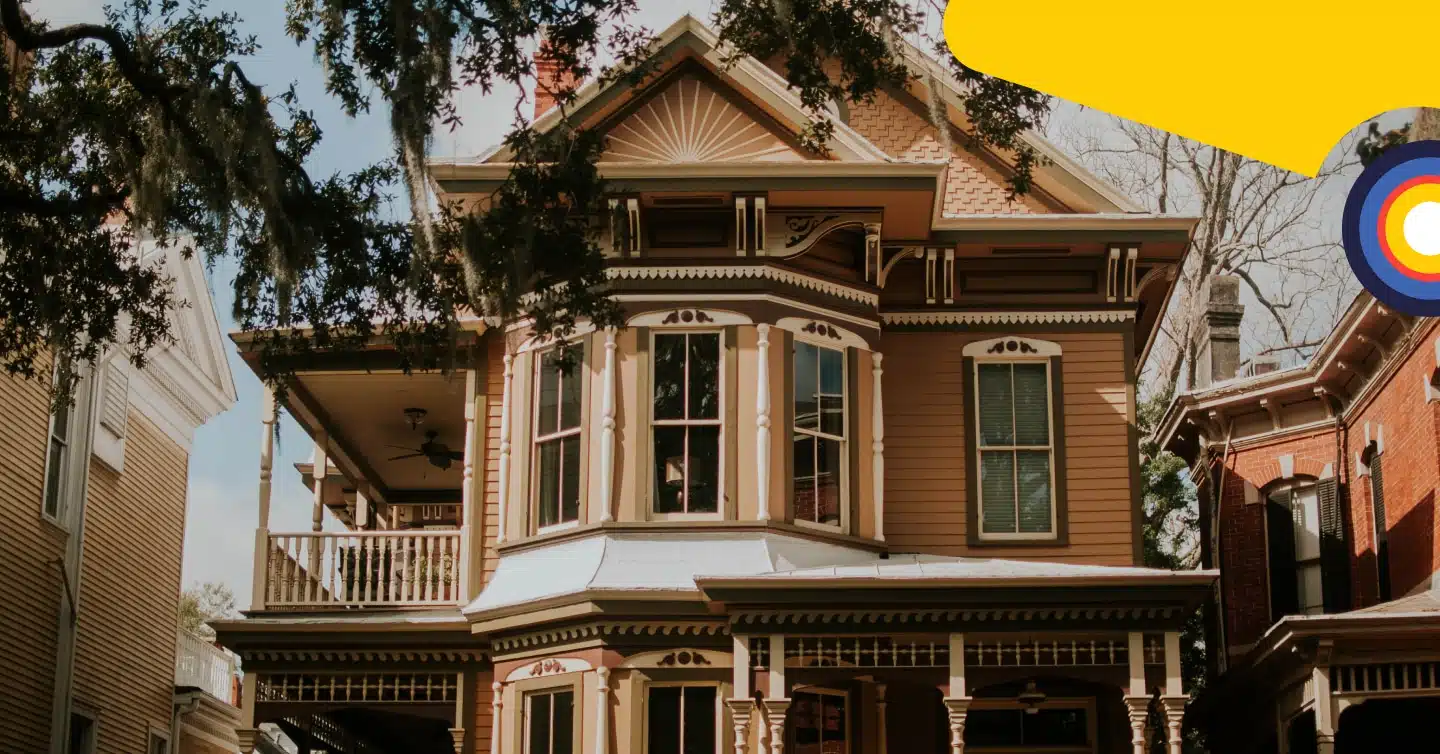A Look Into The History Of Renting Vs. Buying In Canada

Table of contents
For decades, deciding between renting and buying has been hotly debated, especially in Canada. Many dream of owning their own property, while others prefer the flexibility and lower costs of renting. The evolution of homeownership in Canada has been marked by significant changes over the years.
This post will explore the historical comparison of renting vs. buying in Canada, examining the factors influencing this decision over time. We will take a deep dive into the fascinating history of homeownership in Canada and how it has impacted the lives of millions of Canadians. So, whether you’re a renter or a homeowner, join us as we explore the past and present of Canada’s housing market and how it has evolved.
Key Takeaways
- Homeownership has changed significantly due to economic, social, and housing market shifts.
- The government has significantly promoted homeownership, including introducing policies like CMHC’s mortgage loan insurance.
- Housing shortages have always existed, and affordability has been a concern throughout history.
Renting Vs. Buying A Home
The Canadian housing market has changed significantly over the years in terms of policies and socioeconomic factors influencing homeownership. Historically, renting has been considered the default option for those unable to meet the requirements for buying a home.
Renting Vs. Buying Throughout History In Canada
The history of homeownership dates back to the early 20th century when the country’s housing market was still in its infancy. Homeownership was a sign of modest prosperity and was mainly reserved for the elite.
Rooming houses were the norm for working-class men and women who could rent a room cheaply compared to apartments, where rent would be roughly half a working-class wage. Much like today, adequate, affordable housing shortfalls existed, with many working-class families living in central slums like Toronto’s “The Ward.” Living conditions were relatively poor for the average Canadian.
High-rise apartment buildings as we know them today didn’t exist. The first apartment building was built in Montreal in 1889, and in Toronto, the first building permit for an apartment house was issued in 1899. In 1912, Toronto introduced an anti-apartment bylaw that essentially banned apartment buildings, deeming them unsanitary, anti-family and a threat to property values. This further contributed to housing shortages, which worsened with the construction slump during WWI.
The Great Depression was a substantial economic shock that left many Canadians unemployed and often homeless. During the ‘30s, the percentage of apartment buildings grew from 2% to 15%, but this wasn’t a significant enough increase to solve the housing shortage, and affordability was still a considerable concern. In 1938, the National Housing Act (NHA) was passed to provide housing while creating employment opportunities.
The Canadian government established the Wartime Prices and Trade Board on September 3rd, 1939, to avoid the same wartime inflation and social unrest that occurred during WWI. During WWII, the Wartime Prices and Trade Board aimed to protect Canadians by establishing inflationary measures, including rent control on housing and shared accommodations.
Post WW2 And Wartime Housing Limited
The Government of Canada established the crown corporation Wartime Housing Limited (WHL) in 1941 to build and manage rental units for WWII workers and veterans. Dormitory-style housing was built for single workers (primarily women) close to munitions factories.
Single-family homes aptly named Victory Houses were also constructed. These Victory homes were a style of housing prefabricated and designed in a warehouse and then erected in the suburbs of many major Canadian cities. These houses were built to be economical and sturdy, with many still standing today. These homes were often built near factories, so wartime workers had easy access to work.
1945–1949
The government initiated a post-war program between 1944 and 1945 to anticipate housing needs and promote home ownership. At the end of 1945, the Central Mortgage and Housing Corporation (CMHC) was incorporated to lead Canada’s housing programs and find and create housing for returning war veterans and their families.
Housing shortages remained, and Wartime Housing Limited was absorbed into CMHC. In 1946, the Benny Farm was constructed in Montreal by the Government of Canada and acquired by CMHC in 1947, becoming one of Canada’s first subsidized housing.
By 1947, 30,000 Victory homes had been constructed and transferred to CMHC to provide affordable homes to veterans. These homes were sold to the tenants renting them and to returning veterans and their families.
1950s
In the 1950s, single-family homes dominated the landscape, accounting for 60% of all new constructions. The federal government provided grants to cities to encourage them to tear down older buildings and build municipal-owned housing corporations. Regent Park in Toronto was the first urban renewal project, with 52 acres cleared to build low-rent housing and Habitations Jeanne-Mance in Montreal.
In 1954, the federal government agreed to insure mortgage loans by private investors against borrower defaults. This social insurance program protected financial institutions against risk when providing mortgages and remains in place today. CMHC also introduced mortgage loan insurance, making homeownership more accessible to Canadians.
The Bank Act of 1954 was amended to allow chartered banks in Canada to lend money for mortgages. This was the government’s way of reducing involvement in lending and insuring homeowners during the post-war housing boom, which resulted in higher levels of homeownership.
1960s
The 1960s saw a shift to urban growth, with multi-unit apartment buildings outpacing single-family homes for the first time in Canadian history. This shift was largely due to the baby boom generation and groups of new immigrants. In 1966 Canada’s first cooperative housing project was completed in Winnipeg called Willow Park. Willow Park was built to accommodate families with annual incomes between $3,000 and $6,000.
Habitat 67 was an experimental urban residential complex built for Expo 67 in Montreal. CMHC funded 50% of Habitat 67, which took 30 months to complete. When CMHC began renting units in 1968, the cost was higher than the average person could afford, with rents at $1,000 monthly. This was soon reduced to $450 per month, but it was still unaffordable for most.
1970s
At the beginning of the 1970s, affordability again became a major factor in home buying. In 1971, changes to the Tax Act excluded principal residences from capital gains tax. Additional incentives, like the tax-exempt registered homeownership savings plan, were also introduced to stimulate home ownership.
The provincial and city governments began to assume a more active role in housing. By the mid-70s, all 10 provinces had created new housing departments, assumed more responsibility, offered homeownership grants, and funded housing. Some provinces assisted renters by providing tax credits, shelter allowances, and rent controls.
In 1979, CMHC purchased Milton Park, an area of Montreal that was converted into one of Canada’s largest and most successful non-profit low-income housing projects. Inflation in the 1970s and into the 1980s increased the consumer price index to four times what it was at the beginning of the 1970s. Many Canadians began investing in the housing market to hedge against future inflation.
1980s
The beginning of the 1980s saw 3 temporary federal programs introduced for middle-income families:
- The Canadian Home Ownership Stimulation Program provided grants to home buyers.
- The Graduated Payment Mortgage Plan helped homeowners reduce monthly mortgage payments.
- The Canada Mortgage Renewal Plan assisted homeowners in paying a portion of their mortgage and property tax when their payments exceeded 30% of their income due to renewing at a higher interest rate.
Interest rates in the double digits peaked at just over 21% in the second half of 1981 and remained double digits until the early 90s. The end of the 80s saw unemployment begin to grow, and the housing bubble burst, and with it, home prices dropped significantly. Many owners could no longer afford their mortgage payments; meanwhile, their homes quickly lost value, and prices would take more than a decade to recover.
1990s
In the early 1990s, Canadians bought houses anticipating a rise in inflation even though they couldn’t afford them. The Bank of Canada continued raising interest rates to curb inflation. Unemployment grew to 11%, and as more and more Canadians found themselves laid off or worried about the stability of their jobs, they also stopped buying homes. Home prices continued to fall until 1996.
Using historical data from Toronto in the 1990s, homes (and rents) were significantly lower than they are today. Average rent prices in Toronto were $735, while the average price of homes was a mere $217,739. It was in 1997 when the Ontario government under Mike Harris removed rent controls opening up the market to investors and landlords. This trickle-down effect is still being felt in the rental market today.
2000s
The new millennium saw condo construction become the dominant type of home construction. The government encouraged building housing close to downtown jobs and transit to make more efficient use of the land. Compared to single-family homes, the affordability of condo apartments made them more accessible options for first-time buyers. Condo apartments became a downsizing option for aging households as they required less upkeep.
The new millennium also marked a severe rental housing shortage in Canada, with a 1.1% or lower vacancy rate in major metropolitan centres. Rental increases began to reflect this shortage, with prices steadily rising. This shortage largely began due to builders favouring condo investments over rentals due to higher profit margins. Using historical data from Toronto in the 2000s, average rent prices jumped to $980 due to low vacancies. Meanwhile, the average price of homes in the city hit $321,669.
2010s
The housing market picked up again in the 2010s after the 2008 recession. Prices began to grow and spike significantly around 2015, and by 2017, they had spiked significantly again.
Record low mortgage rates, lower than those of the last five decades and remaining steady throughout the decade, made homeownership more attractive again. However, rising home prices quickly made homeownership largely unaffordable for many.
In Ontario, the government introduced the Fair Housing Plan, which contained measures to cool the housing market by expanding rent control rules and included a 15% foreign buyer tax. This plan worked, and home sales and prices fell, though the drop was temporary.
During this decade, average rental prices in Toronto jumped to $1,213 as the Ontario government removed rent controls on new buildings or those occupied after November 15th, 2018. Average home prices soared almost double to $626,438 from the previous decade.
In 2019, the Federal Government announced in the budget the First-Time Homebuyers Incentive (FTHBI) program to help first-time buyers achieve the goal of homeownership.
2020
In March 2020, the world came to a crashing halt as COVID-19 took over. As lockdowns continued, around ¼ of Canadians were on income support. Many Canadians were deferring mortgage payments, and the housing market in Canada plummeted.
Later in the year, the Bank of Canada slashed interest rates, making them lower than ever on record, stimulating the housing market. Homeownership became more affordable once again. With the pandemic restrictions somewhat lifting, the housing market returned with pent-up demand. Homeowners mostly looked to leave major urban areas as many sought private spaces and backyards.
Housing prices began to increase again due to low interest rates and housing supply shortages. The average home price in Toronto hit $1,071,614, and in 2022, the Bank of Canada began to increase rates as housing prices surged and the economy saw inflation begin to skyrocket.
After years of increasing rents, the beginning of the pandemic in 2020 saw rent prices decline as rental supply increased. This gave renters the upper hand to negotiate discounted rents. This was short-lived, and after only a year, rents again began to increase to an average of $1,948 as vacancy rates started to fall in 2021.
2023 – Today
With the Bank of Canada continuing its interest rate hikes to control inflation, the housing market will likely see average prices fall slightly, though not back to pre-pandemic levels. The average home price in Toronto is $1,199,079, making it harder for potential buyers to qualify and afford a home with current interest rates.
A shortage of affordable homes in most areas of Canada is fuelling rental shortages and driving prices even higher. Currently, the average rental price in Toronto is $2,305. This is partly due to inflation and the increase in homeownership costs, with more people choosing to rent as ownership remains out of reach. Rental affordability is now more than ever a significant challenge across Canada; with a lack of affordable rental units, this crisis is only getting worse.
Find a better rate, and we’ll match it, beat it, or give you $500*.
*Conditions Apply
With nesto, it’s stress-free
Frequently Asked Questions
Welcome to our Frequently-Asked Questions (FAQ) section, where we answer the most popular questions designed and crafted by our in-house mortgage experts to help you make informed mortgage financing decisions.
Is renting or owning a home better in Canada?
There are pros and cons to renting and owning, with the major difference being that you’re left with equity when owning a home at the end of the day. Each person’s situation is different, so there is no one-size-fits-all approach.
Where in Canada is it better to rent?
Renting is better in areas of Canada where homeownership costs are high. In most major cities, renting will most likely get you into your desired location much more easily than purchasing.
Where in Canada is it better to own a home?
It’s better to own a home in Canada where the cost of living is lower, such as in rural areas where renting a unit may be harder to find due to a lack of apartment buildings or rental housing.
Final Thoughts
The world of homeownership has evolved significantly over the years. Economies, social norms and shifts in housing markets have caused a major transformation in how owning a home is perceived and accessed. The government has been instrumental in creating policies to incentivize, support and make homeownership more accessible for individuals. Housing shortages and affordability issues remain on both sides of the real estate equation, and only time will tell what the future has in store.
Ready to get started?
In just a few clicks, you can see our current rates. Then apply for your mortgage online in minutes!















